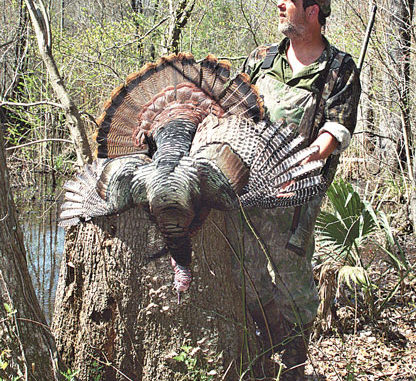
Turkey season in the Lowcountry opens this month, and these tactics will help ensure that you get the season started off right.
The key to turkey hunting success has been simply described as being in the right place at the right time.
The early season that opens in mid-March each year in South Carolina’s Lowcountry can certainly be both the right place and the right time, but getting the specifics correct can be a bit more problematic.
That is, unless you have a good game plan.
There are as many tactics as there are hunters, but some have developed their tactics and honed their abilities to be consistently successful in the 12 counties where the season opens on March 15.
One hunter, Smoky Evans of Awendaw, hunts all over the Lowcountry and takes the phrase “power walk” to a new level.
“I’m the first to say that often it requires patience to take Lowcountry birds,” Evans said, “but I am also quick to get on the move and look for gobblers willing to work my calls. A lot of the birds we have in the lower part of the state are swamp-oriented and will often travel long distances in these swamps. Also, they will sometimes leave these more-dense areas and travel across open areas in search of food.
“I’ll give the birds ample time in the morning to gobble if I’m in a known roosting area,” he said. “However, once prime gobbling time arrives and I hear no gobbles, I start walking. I move slowly and quietly through the woods, pausing to listen, especially during the early part of the morning. Sometimes I’ll hear far-off gobbles.
“I do try to get on a roosted bird early, and often that’s not successful,” he said, “but that simply signals the real beginning of a day of hunting. While I cover a lot of territory compared to many hunters, I do so using as much cover as possible and calling appropriately. I’ll call sparingly early in the day. As the morning passes, my calling will get more aggressive and my movement through the woods more steady.”
“I do stop and scan the woods around me and listen intently for not only a gobbled response to my calls, but for the unsolicited gobble,” Evans said. “Often I’ve taken turkeys by hearing them gobble on their own, or maybe they were responding to a hen I could not hear.”
Evans said it can be a great asset if the longbeard gobbles without his urging. In this situation, he knows where the gobbler is, but the turkey doesn’t know his location.
“It gives me time to select a good calling spot closer to him,” Evans said. “If he’s moving and I hear a couple of gobbles and get a basic direction he’s going, I try to get in front of him. A lot of early season birds are with hens, especially the dominant gobblers, but there are usually plenty of 2-year-old birds that will readily work a call if you’re positioned properly. I’ve found that if I can get in the vicinity of where they are already going, I’ve got the edge.”
“As part of my walk-and-call technique, I will pause in certain prime-looking areas,” Evans said. “If you know the woods and know there should be gobblers in the area, hitch your back to a tree for 15 to 20 minutes at a time along the way. Run a series of soft calls, followed by a more aggressive series of yelps and cutts a few minutes later.
“Give a gobbler time to move in silently. Not all gobblers gobble all the time, especially during the early season. I do not know why for sure, although I think fear of the dominate gobbler plays a role, but it’s enough for me to know that this does occur frequently. I just know that we have harvested many longbeards that never uttered a sound that we could hear; they just slipped into the calling in silent mode.”
Evans said it’s almost unavoidable to bump some birds while you’re moving through the woods, but by sitting for brief periods where topography is prime for visibility and/or listening, he said you’ll see and take gobblers you would otherwise never encounter.
Johnny Garris of Columbia hunts and has guided in the Lowcountry, and he relies heavily on set-up and calling tactics.
“Patience, good calling and woodsmanship are key elements for these Lowcountry birds,” Garris said. “I work from the premise that mature gobblers have their own agenda and schedule. They do not work on the timetable we may want them to. I’ve found that early in the season, especially the first couple of weeks, hens are a real source of problems for hunters, but that simply requires more patience and timing on our part. One thing is for sure, when a gobbler wants to gobble, he’ll gobble, and when he doesn’t, he won’t.
“However, I have learned that if you have confidence in the situation in terms of where you are hunting and your calling ability, you can still enjoy a very successful hunt,” he said. “I also believe that being proficient with multiple calls is a real asset, because you can sound like there’s more than one hen at the same location. That can be a real key to success.
“I believe when a longbeard gobbles to you, he’s essentially saying he’s coming,” he said, “but what you don’t know is how long you’ll have to wait.”
Garris said that one of his best tactics, especially when hunting a new area, is to wait as long as he can, then wait a little while longer.
“Many times I’ve forced myself to sit and be patient, still and observant,” Garris said. “Most times, I’ll eventually see the turkey. Sometimes they’ll sneak all the way in with no more gobbles, and those quiet ones make the wait worthwhile. Plus, I’ve heard a common story repeated countless times. A hunter hears a gobble and waits a while and sees no turkey. Then they make a move on the bird and when they set up and call again, he gobbles from the spot they just left. Be patient and give them some time.”
You can get a jump-start on the 2011 season by hunting the areas that open in mid-March. But as described, gobblers are seldom easy to come by, even in the early season. Make a good plan and work it all day long, and you can enjoy great early season success.

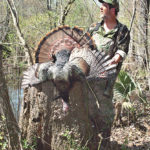
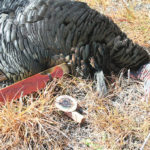
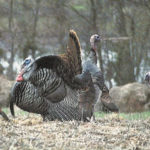
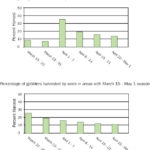
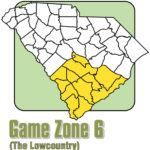
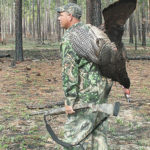



Be the first to comment